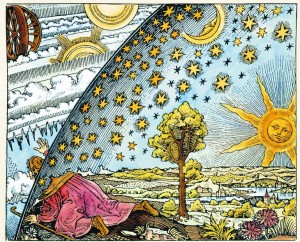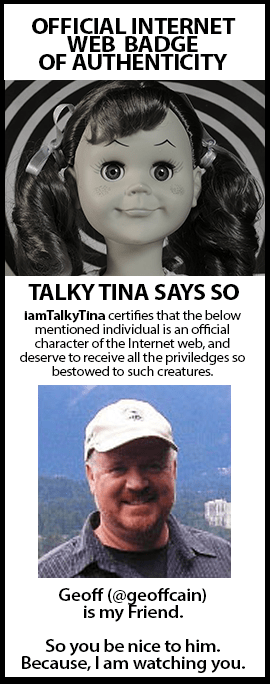 Image via WikipediaIn a recent blog posting from Cable Green, he posted a note on the new grant from the Dept. of Labor which is requiring an open license on all materials built for the grant, which means that the author is attributed but the work is open for others to copy, adapt and distribute. This is “in order to further the goal of career training and education and to encourage innovation…”
Image via WikipediaIn a recent blog posting from Cable Green, he posted a note on the new grant from the Dept. of Labor which is requiring an open license on all materials built for the grant, which means that the author is attributed but the work is open for others to copy, adapt and distribute. This is “in order to further the goal of career training and education and to encourage innovation…”
“Innovation” is a fairly recent word. The Oxford has it back to only 1553 in English; “the alteration of what is established by the introduction of new elements or forms.” It is from the Latin “innovare” meaning “to change” or “renew.” It doesn’t, interestingly enough, imply inventing things out of thin air. It was not always the compliment that it is today. Overly ambitious people, it was thought, were the kind who introduced novelties. As the progression of change in world culture heats up exponentially, we recognize the differences between useful innovation and the mere novelties even if it takes a generation or two.
How does innovation happen? There are a number of theories out there – one that has been popular for a few millenium is the idea of the “Lone Genius.” Before the 1780s or so it was based on the idea that an authority, that is “The Authority,” often divinely inspired, would spontaneously have a really great idea (consider here of Aristarchus or Leonardo). In the Romantic Era, the “lone genius” was inspired and often slightly insane. He had to be a tortured outsider, (e.g. Coleridge or Frankenstein). But there are a lot of ideas that unfold out of a community. I tend to think that a culture of innovation arises out of necessity (the village needs more food) and then someone looks at other problems the village has (seasonal flooding) and then has an intuitive leap that brings the two problems together into a solution (irrigation). What is the difference between that village and the village that failed? Maybe it is because there are also cultures of dormancy – where folks try to innovate using the same paradigms and tools as they have always used but try to apply them to a radically new problem. Sometimes that is okay for quite a long while. We are basically sending satellites into orbit with 18th century physics. It is working so why not? It will continue to work until we are faced with a larger problem that requires a very accurate definition of gravity.
So what does this have to do with Open Education Resources and open textbooks? One way of looking at the problem of open textbooks is to look at technologies, formats (open and proprietary), and distribution systems. This is the old way. This is textbook authoring as a product. Products require support from corporations, distributors, editors, vettors, etc. In other words it is centered on the object rather than the act. Where is the innovation? The innovation in all of this is quietly going on around us in colleges like College of the Redwoods where the Math dept. saw the problem of Math textbooks and brought existing technologies together into their community (their department). The innovation is coming from places like Wikieducator where the tools are being created not just to create textbooks, but to facilitate the community needed for the real innovations to come.
At College of the Redwoods, the instructors knew that there was no textbook currently out there that would serve the specific needs of their students: those needs are not just financial although Humboldt County is in pretty dire straights much like the rest of California. Those needs are also the preparedness of the students based on what is happening in the local high schools, and the needs of local business and industry. There is no one but the department that could ultimately vet a textbook to meet those problems other than the community that is experiencing them.
It is my sincere hope that the direction that the OER community is going is not to figure out how to continue to traditionally silo knowledge and information but to inspire the creativity and facilitate the community-building necessary to solve one of the most important problems of our time: access to education. We need more research on how to facilitate open textbook creation on college campuses. There are successful models out there. Lets find out how they work.
I am interested in your feedback on what you think helps create a culture of innovation on campuses today or give us some of your favorite examples of grassroots learning and home-rolled open education resources.
Related articles
- More thoughts on OERs and Open Content (downes.ca)
- Taking OER Beyond the OER Community: Part I (downes.ca)
- California Embraces Open Source Digital Textbooks (downes.ca)
- Student PIRGs’ Nicole Allen: Open Education and Policy (creativecommons.org)





